A Bombing, Picasso, and in 2016, Koldo Serra's Film: "Gernika," The Movie
Search in the Web
A Bombing, Picasso, and in 2016, Koldo Serra's Film: "Gernika," The Movie

Exploring the Confluence of History, Art, and Cinema through Koldo Serra's Film "Gernika," which in 2016 took us back to the devastating bombing during the Spanish Civil War. In an exclusive interview, the Bilbao director shares his unique perspective, unveiling the behind-the-scenes process and how he managed to capture the emotional essence of that historical period.
APRIL 26, 1937, A DATE TO REMEMBER
No matter how many years go by, April 26, 1937, will be etched into the history of Gernika and humanity. This devastating bombing against a completely defenseless population was the result of a meticulously planned and executed military tactic by the German Legion Condor and the Italian Aviazione Legionaria. The attack strategy used in Gernika was later used in other places during World War II.
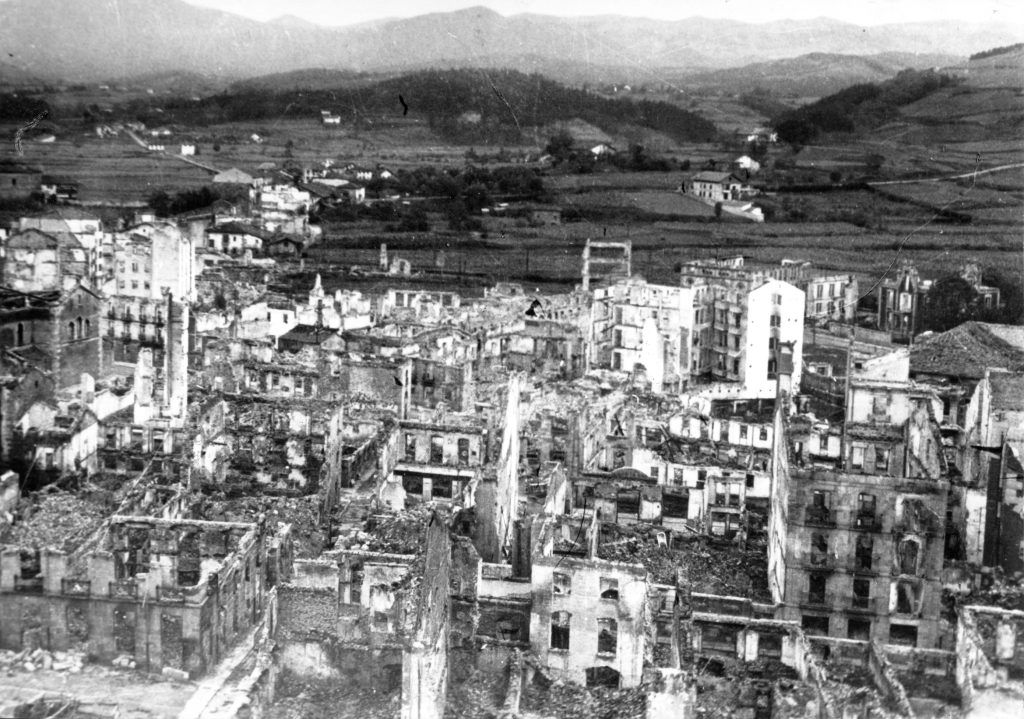
GEORGE L. STEER AND THE NEWS THAT WENT AROUND THE WORLD
Just one day after the shocking bombing that devastated Gernika, the impactful chronicle by journalist George L. Steer saw the light in The Times and The New York Times. This account emerged as the most extraordinary war correspondent's report, highlighting the brutal reality of the events. Both Steer's chronicle and the Gernika bombing transcended borders, capturing global attention and revealing the true magnitude of what happened.
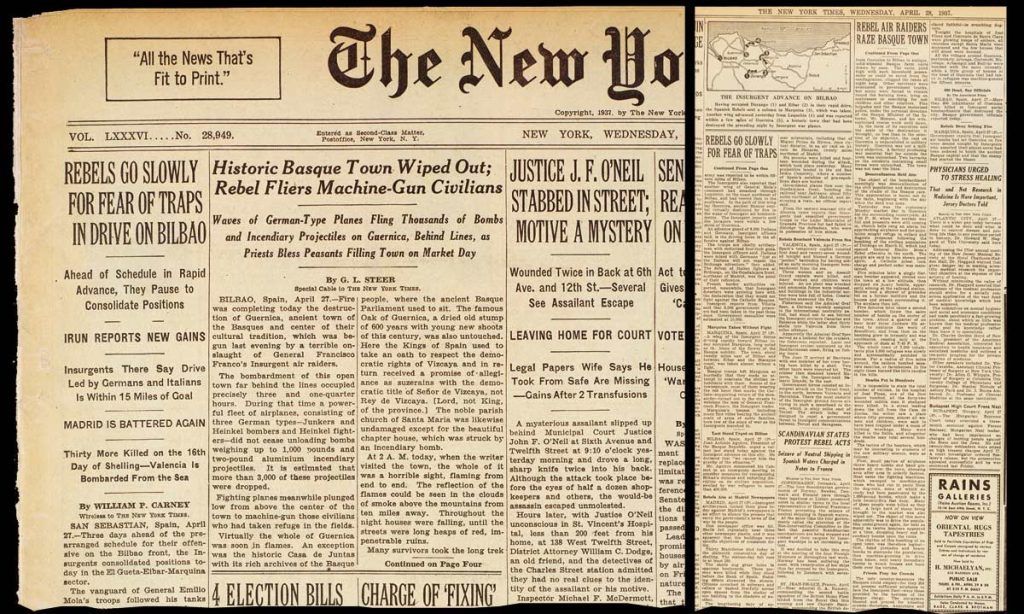
79 years later, in 2016, the film "Gernika," directed by Koldo Serra, was released. Although the film doesn't mention the specific journalist, it pays homage in some way to all journalism professionals who risked their lives (in some cases almost on the front lines) to tell the truth when repression and news control during the Civil War were glaringly evident.
PICASSO AND A PAINTING FOR HISTORY
The bombing brought about other historical events, such as the creation of Pablo Picasso's iconic mural painting "Guernica" its subsequent exhibition in the Spanish Pavilion at the Universal Exhibition in Paris in July of the same year, and its exile for over 40 years on the other side of the Atlantic. In it, the Malaga-born artist aimed to reflect the consequences and horror of the Spanish Civil War, as well as his total rejection of the brutality of war.
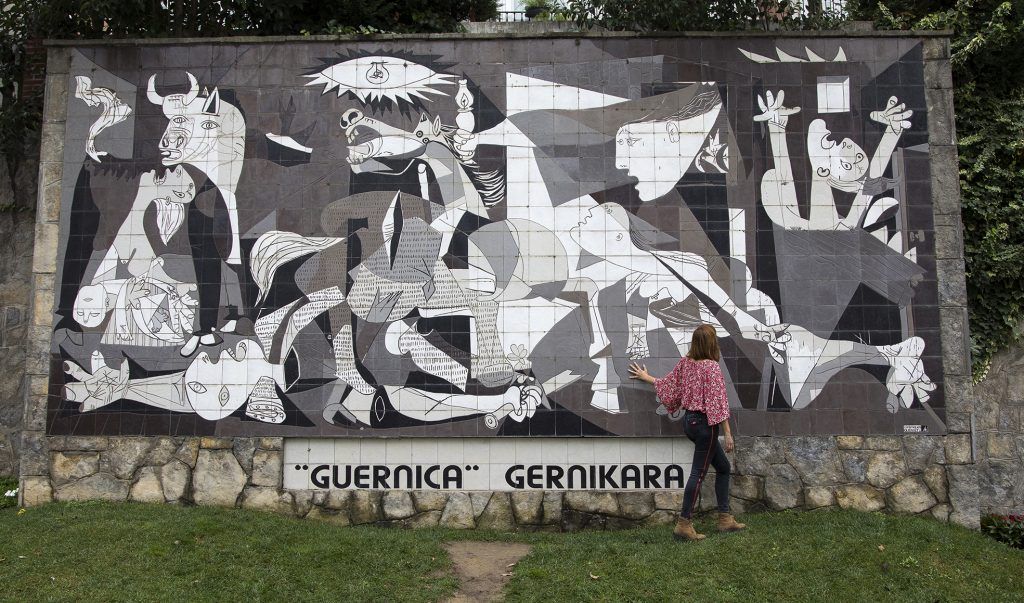
GERNIKA, THE MOVIE
In 2016, for the first time, the tragic bombing of Gernika was brought to the big screen as the main source of inspiration for a film. It tells the love story between Henry, an American journalist played by James D'Arcy, and Teresa, a young editor from the Republican press office embodied by María Valverde. The plot unfolds amid the chaos of wartime and intertwines with the impactful historical event that was the bombing of Gernika. The film was shot in four languages: English, Spanish, German, and Basque, with a duration of 1 hour and 50 minutes, and is currently available on platforms such as Rakuten TV, Google Play Movies, and Apple TV online.
During the film's promotion, Koldo Serra explained that the movie recreates, in its own way and through fiction, the perspective of a journalist (referring to George Steer) who becomes the sole witness, the only voice. The journalism of the time, repression, the factional war, and the incendiary bombs tested in the real Gernika all appear in Koldo Serra's "Gernika."
Another detail not to be overlooked by the viewer is the small real scenes obtained from the testimonies of some surviving victims, portrayed in the most respectful way possible in the recreation of the bombing at the end of the film. This attentive and careful approach in production stands out, since despite being a film with a script focused on a fictional plot, it never loses sight of its inspiration on the fateful April 26, 1937.
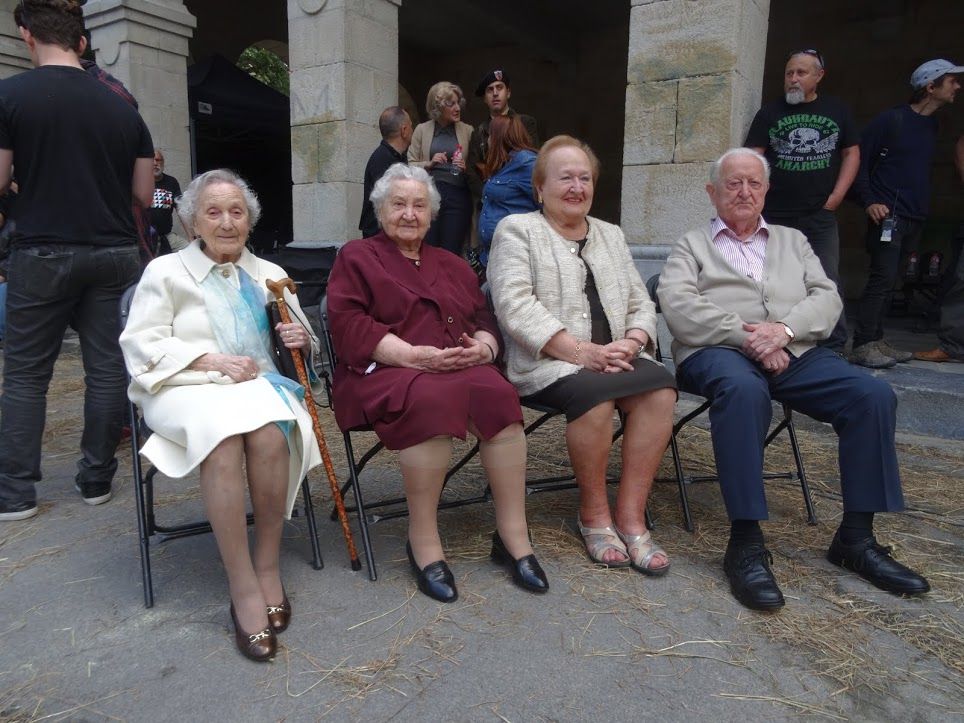
SYNOPSIS
Bilbao, April 1937. Teresa (María Valverde), an editor from the Republican press office, clashes with Henry (James D’Arcy), a down-and-out American journalist covering the northern front during the Civil War. Teresa, courted by her boss Vasyl (Jack Davenport), a Russian advisor to the Republican government, is drawn to Henry's dormant idealism and wants to awaken in him the passion for telling the truth that was once his sole objective.
A STAR-STUDDED CAST AND GERNIKA'S INVOLVEMENT
María Valverde, the lead actress, is joined by international actors James D'Arcy, Jack Davenport, and Burn Gorman. The spectacular main cast is completed by actors and actresses of recognized national and international prestige such as Ingrid García Jonsson, Álex García, Julián Villagrán, Irene Escolar, Joachim Paul Assböck, Bárbara Goenaga, Víctor Clavijo, Natalia Álvarez-Bilbao, Elena Irureta, Markus Oberhauser, Jon Ariño, and the voice of Hugo Silva.
Extras were selected through auditions held the year before the film's release, and these auditions were extraordinarily successful in terms of participation. No one wanted to miss the opportunity to be part of a high-budget film production with great projection.
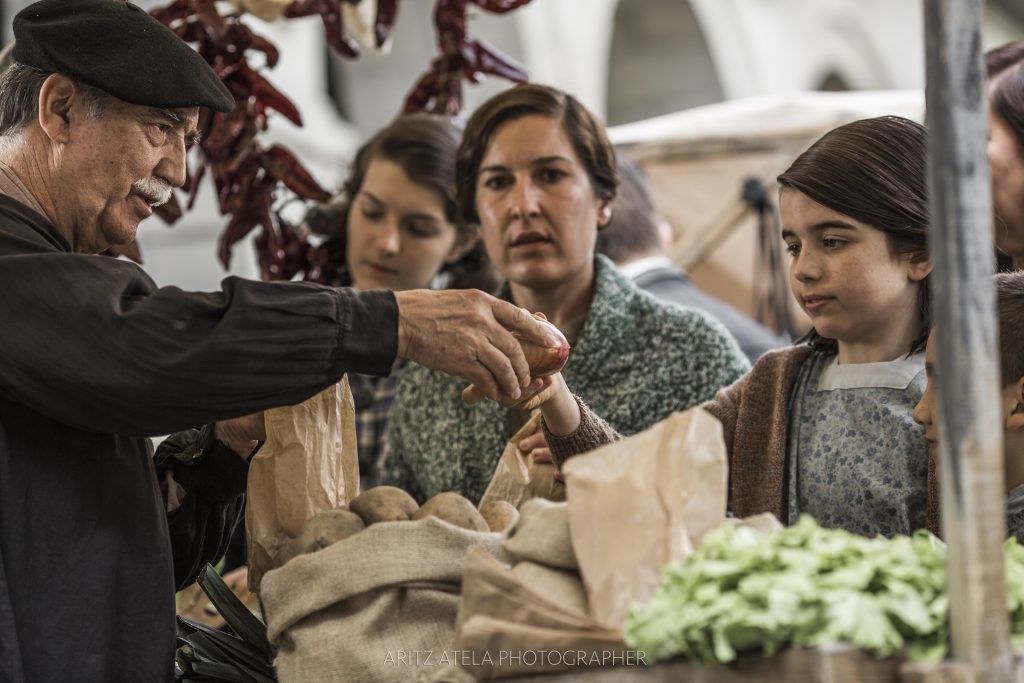
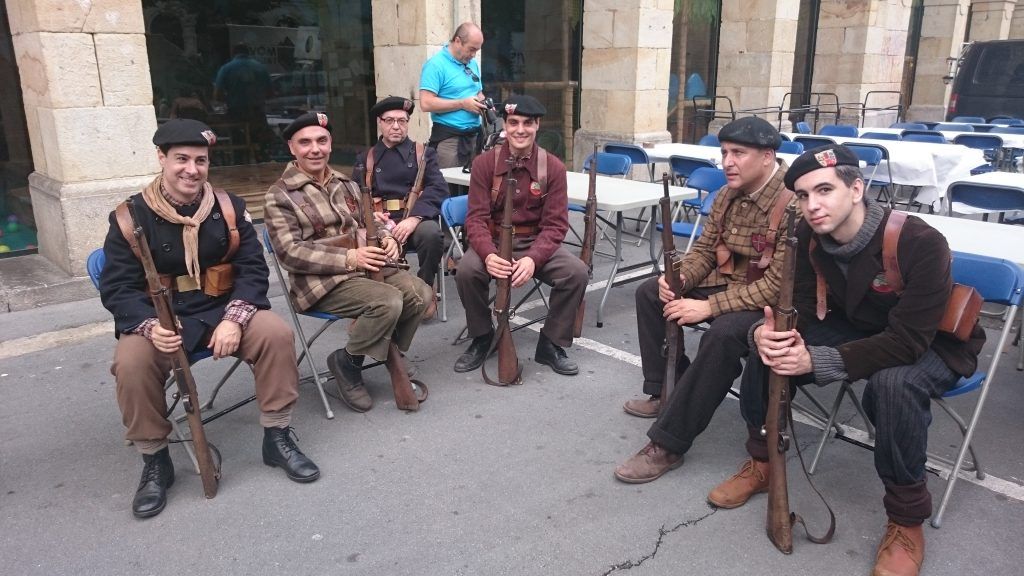


Photos: Toribio Beares
INTERVIEW WITH KOLDO SERRA, THE FILM DIRECTOR
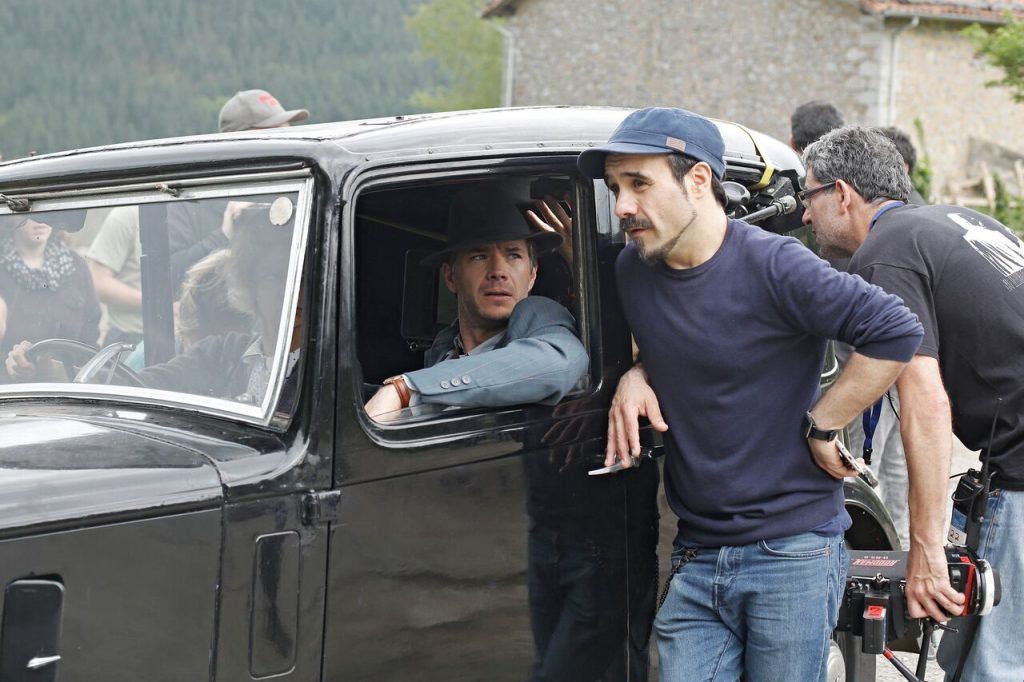
"Gernika, the movie" comes to you through the screenwriters Barney Cohen and Carlos Clavijo. Being Basque as you are and with no cinematic portrayal of the bombing, we imagine you couldn't say no to the project.
That's right, "Gernika, the movie" comes as an assignment. It is a project led by producers Jose Alba and Carlos Clavijo, both from Malaga (here the connection with Picasso and his painting), and written by the latter along with Barney Cohen, a New York screenwriter. And it's true, there is no film that addresses the topic. It was a surprise when, looking into it, we only found the two-episode TV movie for ETB called 'Gernika bajo las bombas' from 2012. As I say, there was nothing in cinema, so the responsibility for me was even greater; effectively, I couldn't say no to the project.
The bombing is a delicate subject with a lot of emotional weight still today. It must have been a significant responsibility. Not forgetting is the best way to commemorate what happened, and in this case, the film plays a significant role by drawing inspiration from that event.
Indeed, because as you say, it's a topic with a lot of emotional weight, and it's challenging not to get involved in that way. I don't understand any other approach to the subject. Furthermore, even today, there are sectors that deny the truth, and it is fair to tell what happened (regardless of whether we did it within the framework of a work of fiction with a plot created for the film).
It should not fall into oblivion and should reach the new generations so they understand what happened then and continues to happen in many places around the world.
Personally, I knew the history of the bombing, but not from the inside, so we spoke with survivors and family members, read books about journalism of the time, and many about the bombing itself and the accounts of those who survived it. Additionally, we did a lot of work with graphic documentation to be as faithful as possible to the aesthetics of the time.
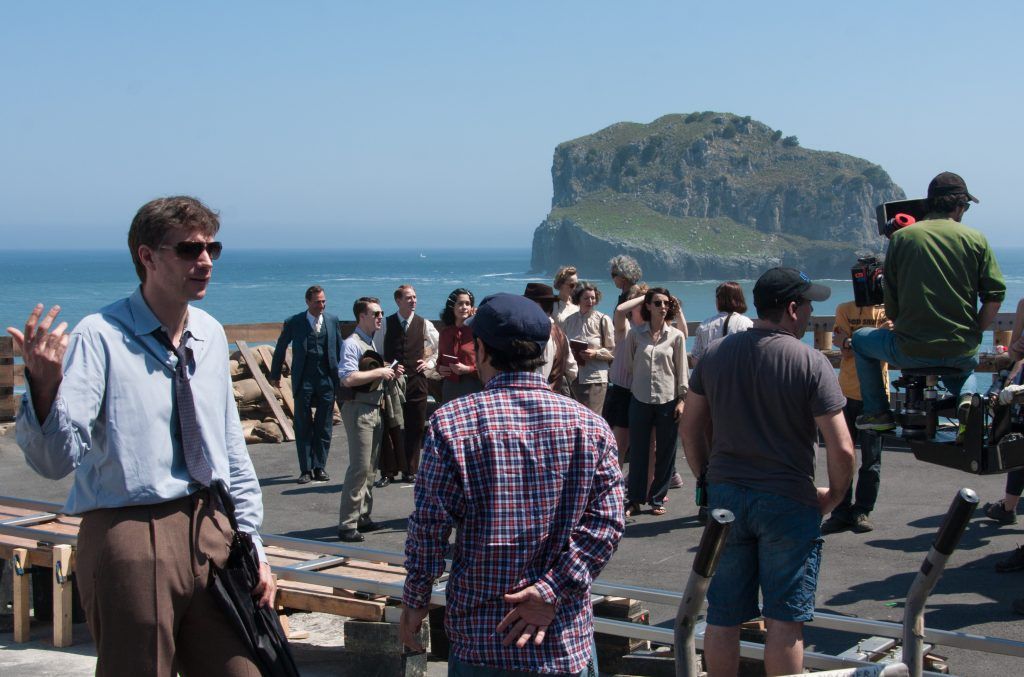
You had a star-studded cast, and the protagonists James D'Arcy, María Valverde, and Jack Davenport set the bar very high. How was it to work with such a team? Do you know what it meant for them to delve into this dark stage of our history?
I think everyone empathized from minute zero with the story and with what was being told. Those from outside only knew Picasso's painting but not the story behind its creation. When we told them, they couldn't say no, and they were really involved in telling this story.
Regarding working with them, well, as you can imagine, it was a luxury. First-rate actors and actresses totally involved in the film. With María Valverde (incredible what she did carrying the whole movie on her shoulders), Bárbara Goenaga, or Víctor Clavijo, I had worked before. A diverse representation of Basque actors and actresses completed the rest of the cast.
In a moment of the movie, the character played by María Valverde says, "here we protect the art and beauty of war." It is a very nice reference to how artistic heritage should be treated and how it was managed at that time. Cinema is also an art and should be protected, right?
Exactly. Nowadays, we can enjoy many universal works of art because some governments decided to protect them from the barbarity of wars. The movie also talks about that, about how information is used and what effects it has on humans and their surroundings.
Cinema, as an art and cultural good, must be protected and preserved. The new generations having access to works created a hundred years ago is a right. The same goes for literary or musical works. Culture is everyone's heritage, and we must preserve and protect it.
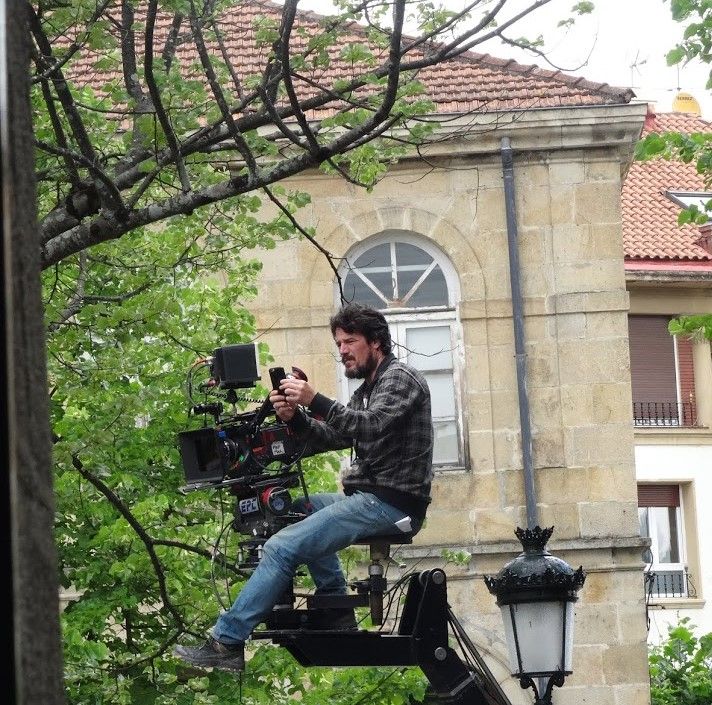
The photography of the film is stunning. The contrast of rural areas and the ambiance of the time with bomber planes and the warlike aesthetics of movies about world wars is brutal.
The film's photography is the work of Unax Mendia, a Lekeitio-born cinematographer who knows the locations where we filmed very well. During the preparation, we watched a lot of war films and many movies about World War II in particular, without losing sight that we were filming in the Basque Country a few years earlier.
We decided to have a progression in the color of the film. We wanted to enhance the colors at the beginning, show the beauty of the places that would later be devastated. In fact, the entire final part of the film is much less saturated; we gradually removed the color throughout the bombing until reaching paler tones close to the black and white images that everyone has in mind when talking about the bombing of Gernika.
"Tell the world what has happened," the protagonist also says. George Steer did it with his chronicle, and the whole world turned its attention to Gernika. Almost 80 years after April 26, 1937, in 2016, Koldo Serra released the first film about that bombing that destroyed Gernika. How was it?
Well, it says a lot about how little History is treated and how little it is talked about. It is always said that there are many movies about the Civil War, post-war, and so on. I always say there are few; we have to talk about our history; people must know the past to avoid making the same mistakes. And, of course, not let those who try to hide certain facts succeed.
Regarding the opportunity we had, I am delighted to help make known the events that occurred. We must be grateful to Steer because without his chronicle, the world would never have known what really happened, and it would have been hidden or disguised.
How was the experience of filming in the actual town where the tragedy occurred?
Well, it was something magical and at the same time painful. Being able to be truly in the place where everything happened is a privilege, especially because we could count on the presence of some survivors with whom we shared a good time. Listening to them was emotionally tough, but it also gave us wings to continue in our commitment to telling their story.
Obviously, there is not much left of the Gernika before the bombing, so beyond the area where we recreated the market, we had to recreate it through different locations such as Lekeitio, the streets of Artzeniega or Tiermas and Escó (in Aragon) for the part where the town is in ruins and flames.

Nowadays, several air-raid shelters in Gernika remain intact. It is quite impressive to enter them. Did you have the opportunity to visit them before or after filming?
Yes, indeed, we were able to approach and enter them, both before and after filming the movie. It is quite impressive to know that these spaces were the salvation of so many people. One tries to imagine the terror that was experienced in them, and the heart shrinks.
In the movie, we filmed in the basement of a house in Artzeniega, which logistically and aesthetically worked better for us in the movie. Likewise, they were sequences that were difficult to film, like everything related to the bombing and the deaths, the pain, and the destruction that it brought with it.

Reader Interactions